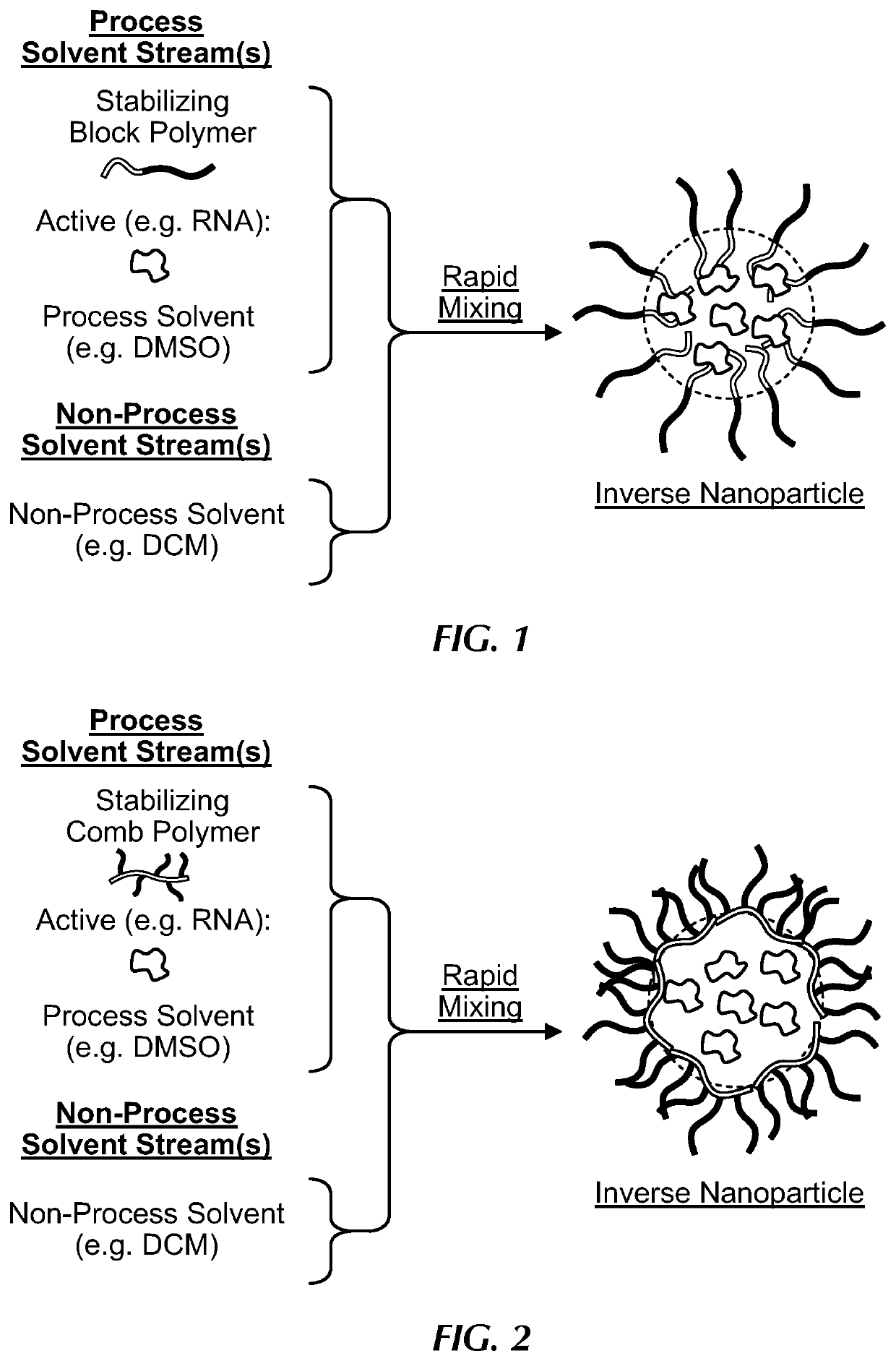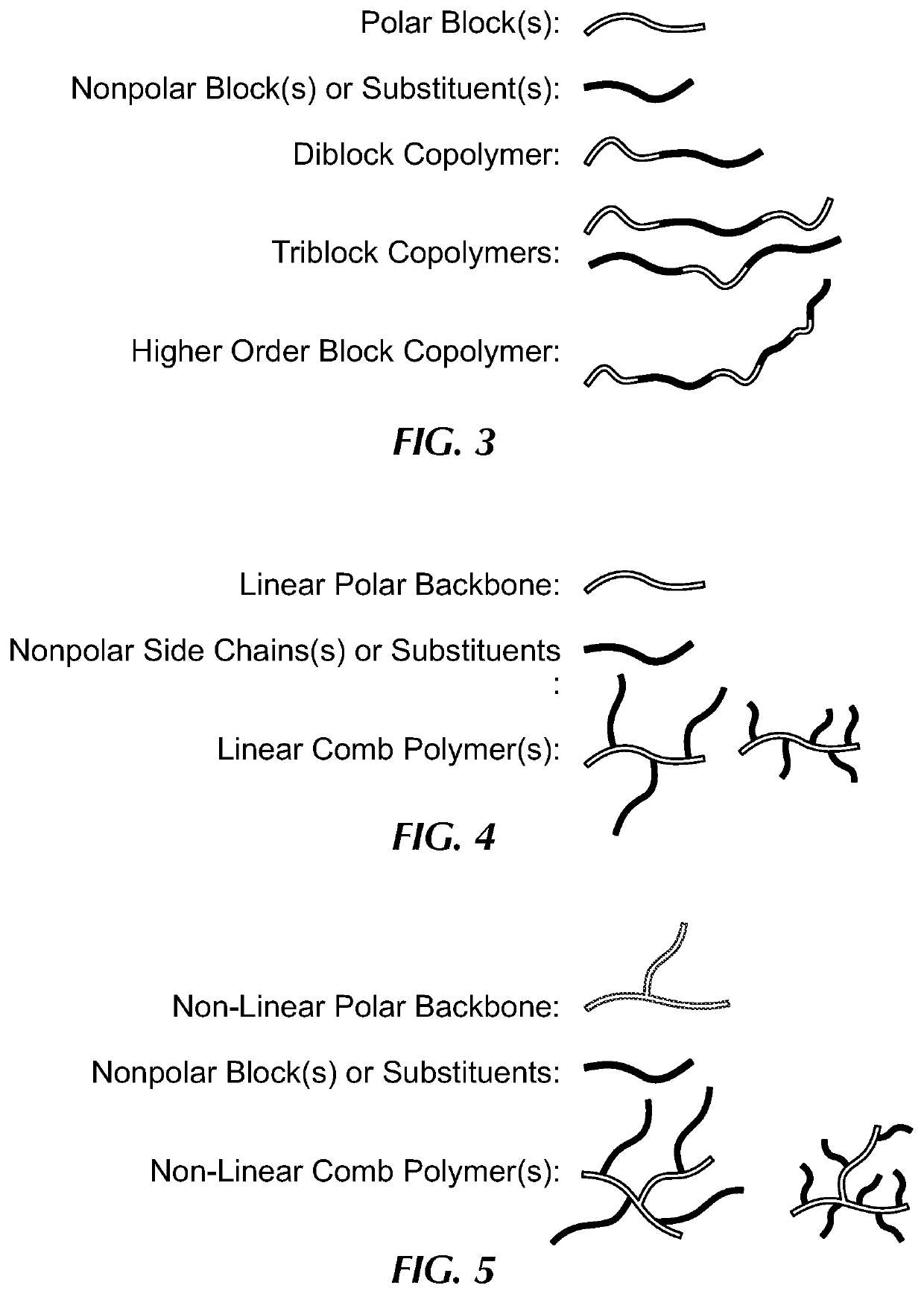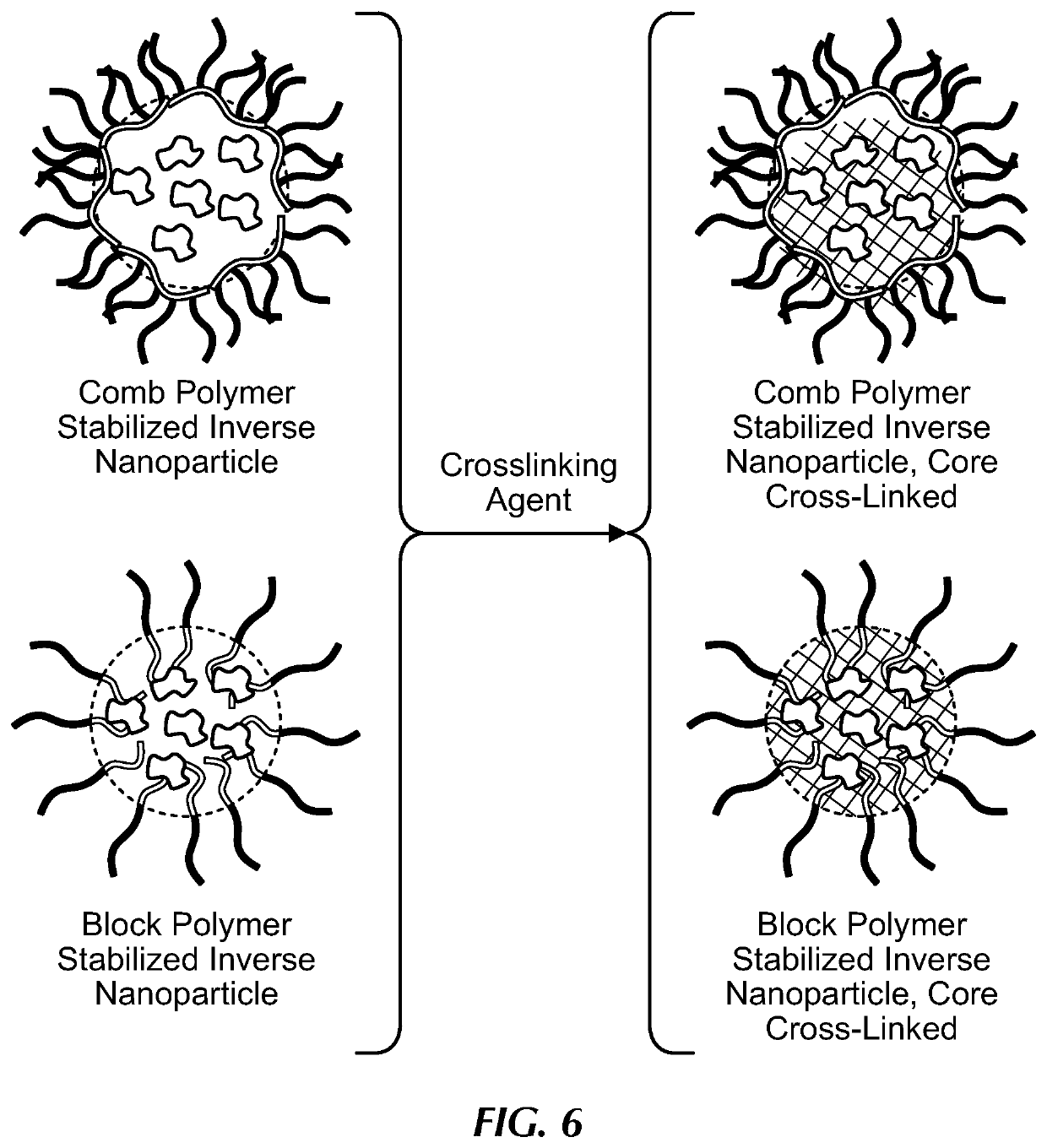Comb polymer and block copolymer stabilized nanoparticles encapsulating nucleic acids and other soluble hydrophilic compounds
- Summary
- Abstract
- Description
- Claims
- Application Information
AI Technical Summary
Benefits of technology
Problems solved by technology
Method used
Image
Examples
example 1
tion of RNA with PS-b-PAA
[0099]RNA from Torula utilis (Mr 5000-8000) was used as a model nucleic acid active and was encapsulated in polystyrene (5 kDa)-b-poly(acrylic acid) (4.8 kDa) (PS-b-PAA). RNA was dissolved at a concentration of 100 mg / mL in water with 0.5 or 1 charge equivalents of tris(hydroxymethyl)aminomethane (Tris) or ammonia with respect to the phosphate groups in the RNA. The RNA stock solution was diluted with PS-b-PAA in dimethylsulfoxide (DMSO) to produce a solution that was 5 mg / mL RNA, 5 mg / mL PS-b-PAA, and 5 v % water in DMSO. The process solution (0.5 mL) was rapidly mixed with a non-process solvent stream (0.5 mL) in a confined impinging jets (CIJ) mixer, and the effluent from the mixer was collected in a 4 mL non-process solvent bath. The non-process solvent was either chloroform (CHCl3), dichloromethane (DCM), or tetrahydrofuran (THF). The specific formulations are given in Table 1. As a control, all formulations were tested without any block copolymer, whic...
example 2
ion Crosslinking of PS-b-PAA / RNA Nanoparticles and Extraction of Unencapsulated RNA
[0101]RNA from Torula utilis (Mr 5000-8000) was used as a model nucleic acid active and was encapsulated in polystyrene (5 kDa)-b-poly(acrylic acid) (4.8 kDa) (PS-b-PAA). RNA was dissolved at a concentration of 100 mg / mL in water with 0.5 charge equivalents of tris(hydroxymethyl)aminomethane (Tris) with respect to the phosphate groups in the RNA. The RNA stock solution was diluted with PS-b-PAA in dimethylsulfoxide (DMSO) to produce a solution that was 5 mg / mL RNA, 5 mg / mL PS-b-PAA, and 5 v % water in DMSO. The process solution (0.5 mL) was rapidly mixed with a CHCl3 non-process solvent stream (0.5 mL) in a confined impinging jets (CIJ) mixer, and the effluent from the mixer was collected in a 4 mL CHCl3 non-process solvent bath. Note that this is the same as Sample 1D in Example 1. To the final nanoparticle dispersion, 100 μL of methanol containing CaCl2, ZnCl2, or no salt, was added dropwise while s...
example 3
f PS-b-PAA / RNA Nanoparticles with PS-b-PEG
[0104]Sample 1E in Example 1, was crosslinked with Ca2+ and coated with polystyrene (1.6 kDa)-b-poly(ethylene glycol) (5 kDa) (PS-b-PEG). Methanol (100 μL) containing CaCl2 (1 charge equivalent of Ca2+ with respect to the PAA) was added dropwise to a stirring dispersion of nanoparticles in THF. The nanoparticles were allowed to crosslink for 30 mins. After crosslinking, the nanoparticles were diluted with a solution of PS-b-PEG in THF to produce a final solution that was 1 mg / mL nanoparticles (0.5 mg / mL PS-b-PAA and 0.5 mg / mL RNA) and 1 mg / mL PS-b-PEG. This solution was rapidly mixed with an equal volume of water in a CIJ mixer and collected in a water bath such that the final solvent composition was ˜25% THF and ˜75% water. The size distribution of the coated nanoparticle dispersion was measured by dynamic light scattering (DLS) in water. The PK1 diameter was ˜50 nm and the polydispersity index (PDI) was 0.3 from the Malvern Zetasizer DLS s...
PUM
 Login to view more
Login to view more Abstract
Description
Claims
Application Information
 Login to view more
Login to view more - R&D Engineer
- R&D Manager
- IP Professional
- Industry Leading Data Capabilities
- Powerful AI technology
- Patent DNA Extraction
Browse by: Latest US Patents, China's latest patents, Technical Efficacy Thesaurus, Application Domain, Technology Topic.
© 2024 PatSnap. All rights reserved.Legal|Privacy policy|Modern Slavery Act Transparency Statement|Sitemap



